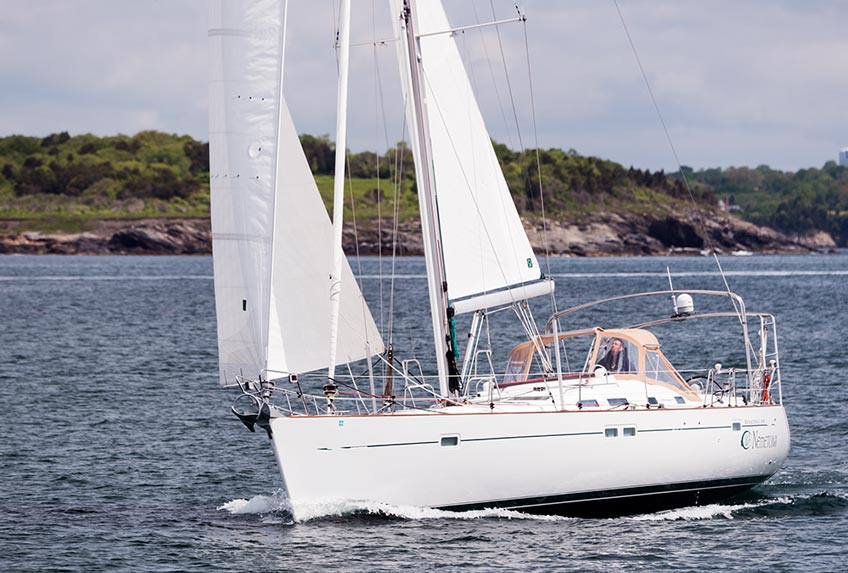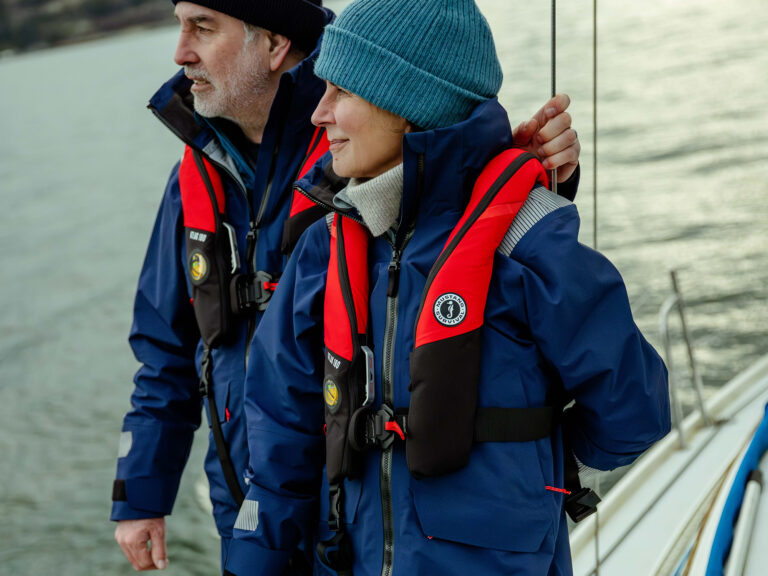
The rage in the market today is the new breed of free-flying furling systems aimed at furling anything from a heavy jib to a running asymmetrical. Specifically, the focus is on replacing the conventional spinnaker sock for downwind cruising sails. More than a dozen manufacturers have designed a furler to address this market. Essentially, the idea is to provide a luff rope with a swivel at the top and a continuous line drum at the bottom to wind the sail around the rope.
Furling units can be divided into two types: bottom-up and top-down. Bottom-up systems work the same way your conventional headsail roller furling system works, except that instead of aluminum foils wrapped around a fixed stay, a torsional rope is used. The tack is fixed to the drum at the bottom. The rope runs up inside the luff of the sail. As the drum is turned, the tack winds around the cable and the sail furls from bottom to top. A continuous line drum is used so you don’t run out of line before the sail is furled because the sail will not necessarily come in at the same rate as with a conventional furling system. This is mostly due to the torsional rope. If the rope twists, the sail will require more effort to furl and may not furl smoothly. (A rope is critical to the operation of any free-flying furling system, and is usually the limiting factor.)
Bottom-up units work fine as long as the sail is not too wide at the top. Ideally, the sail should be genoa-like. The mid-girth (mid-leech to mid-luff) should not be much greater than 50 percent (no more than 60-65 percent). This is the case for off-wind sails that are built for close reaching angles. Often referred to as Code Zero (or Screacher for multihulls), these are basically big reaching genoas that tend to be flatter than other downwind sails. There should be little to no sail area forward of the straight-line luff. The downside to this type of sizing is that the sails act like genoas when eased out at broad angles. They are too flat and small to be stable, and they project out from behind the mainsail and around the bow. For this type of sail, ideal apparent wind angles are typically between 60 and 130 degrees.
As downwind sails get bigger and the mid-girth increases, it’s harder and harder to get the top of the sail to furl if you start from the bottom. For broader angles (90-155 degrees), downwind sails are bigger, wider, and they have more depth. They also have considerable area forward of the straight-line luff. That is what keeps the sail stable and powerful and allows you to ease the sail out to project area in front of the boat. This is where top-down furling comes into play. Since the sail needs to project and there is a lot of area in the front of the sail, the torsional rope is not attached directly to the sail. The head is attached directly to the swivel and rope at the head. The tack is secured to a free-rotating fitting on the drum. As the furling line is pulled, the tack lags behind and the head furls first. The sail furls from the top down, capturing the hard-to-furl top sections first.
No matter how well the furling system works, or how good the torsional rope is, there are still limits. Full-sized broad-reaching and running spinnakers have mid-girths of as much of 100 percent of the foot length and can be very deep. That can be problematic to furl. As a rough guideline, if the mid-girth is much over 88-90 percent of the foot length, all bets are off. It might furl, it might not. That’s when a spinnaker sock makes the most sense. They’re a good choice for full-sized asymmetrical spinnakers designed for broad reaching and running. They are also more cost effective, since a good top-down furling system with a proper torsional rope can easily cost as much as the sail.
The bottom line is this: for furling systems, smaller and flatter is better. Once you are full sized, think sock.
This cruising tip has been brought to you by Quantum Sails.








